Top 24 places to visit
Are you planning a trip to Majorca in 2024? Look no further! From the bustling capital of Palma, to the scenic coastal towns, and the hidden gems off the beaten path. Majorca has something for everyone to enjoy. Be it the beautiful beaches, rich culture, delicious food or lively nightlife, our curated list of destinations will help you make the most of your trip in 2024. Discover the hidden gems and must-see hotspots as you plan your perfect holiday to this beautiful Mediterranean island.
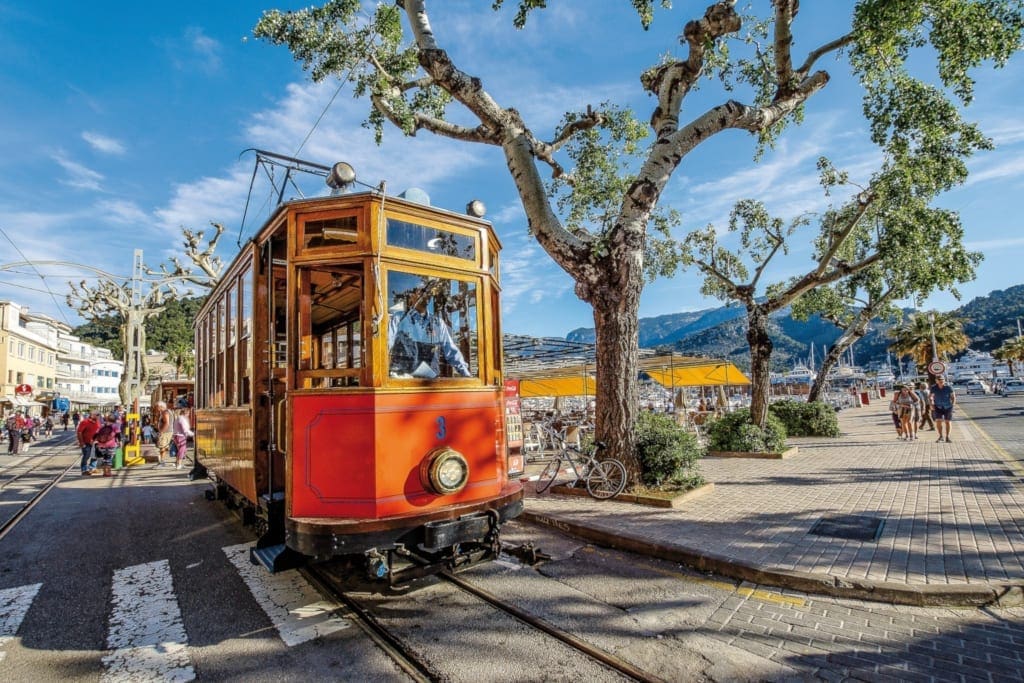
Grand merchant houses, orange and lemon groves, a famous tram which connects the small town of Soller with the Port de Soller district – all surrounded by the steep hills of the Serra de Tramuntana. Soller is an old Mediterranean town, designed around narrow streets with traditional style residential townhouses and is very popular with tourists & day trippers. Known as Vall d’Or (Golden Valley), orange and lemon groves have been watered from sources in the hills as far back as the 13th century with exports of citrus fruit laying the foundations for the great wealth of the town.
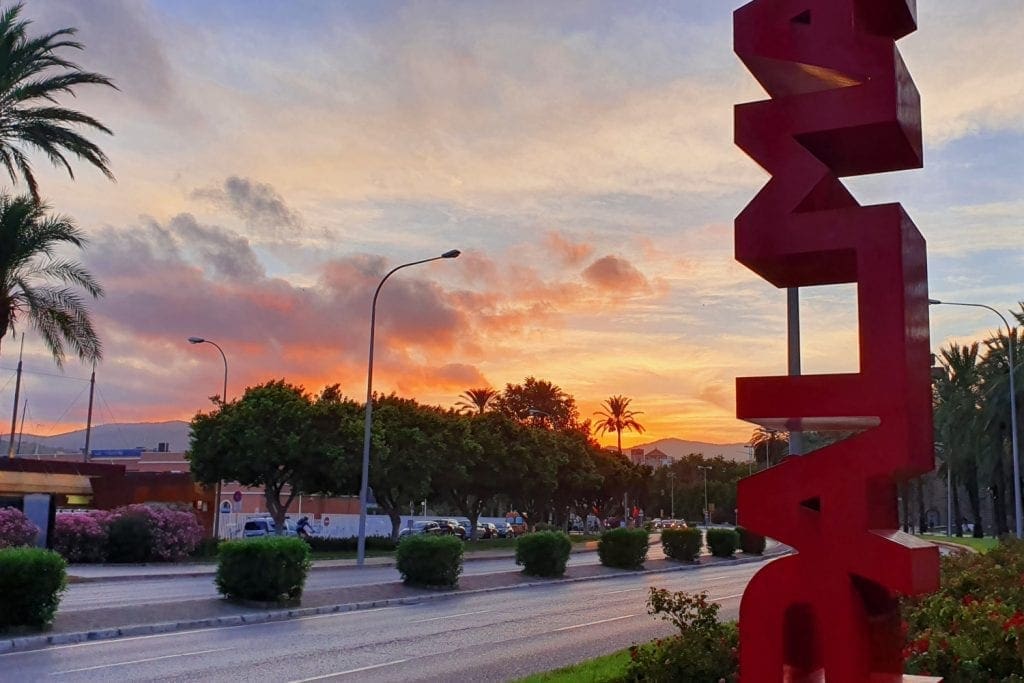
Palma is one of those cities that you will never quite feel you have explored properly unless you have put aside a few weeks to do just that! There are very few places on this planet that can match Palma’s charm & beauty, from the majestic Gothic Cathedral to the medieval streets, churches, aristocratic townhouses & public squares, this city will charm you & romance you. Known as ‘The Pearl of the Mediterranean’ and named as one of the best places to live in 2015 by the UK Sunday Times, Palma has a rich history going all the way back to the 13th Century reconquest…

Famous for the Valldemossa Charterhouse, a palace / monastery where King Sancho of Majorca resided prior to his death in 1324 and the musician Frédéric Chopin and the writer George Sand lived from 1838 to 1839, the village of Valldemossa is one of Mallorca’s most eye-catching sights. The village boasts tree-lined, cobbled lanes, stunning villas and ancient blonde stone houses and has been promoted internationally as a place of outstanding beauty, largely due to the affection of distinguished traveller and cultural writer, the Austrian Archduke Ludwig Salvator.

Honey-coloured townhouses, citrus orchards, almond and olive trees all perched on a picturesque hillside and set against the mountain backdrop of the Puig des Teix at 1062m, Deià is a small mountain-coastal village that has attracted artists, tourists and celebrities for many years. One of the prettiest villages in Mallorca, Deià is part of a landscape awarded World Heritage Site status. The writer Robert Graves famously lived in the village twice…
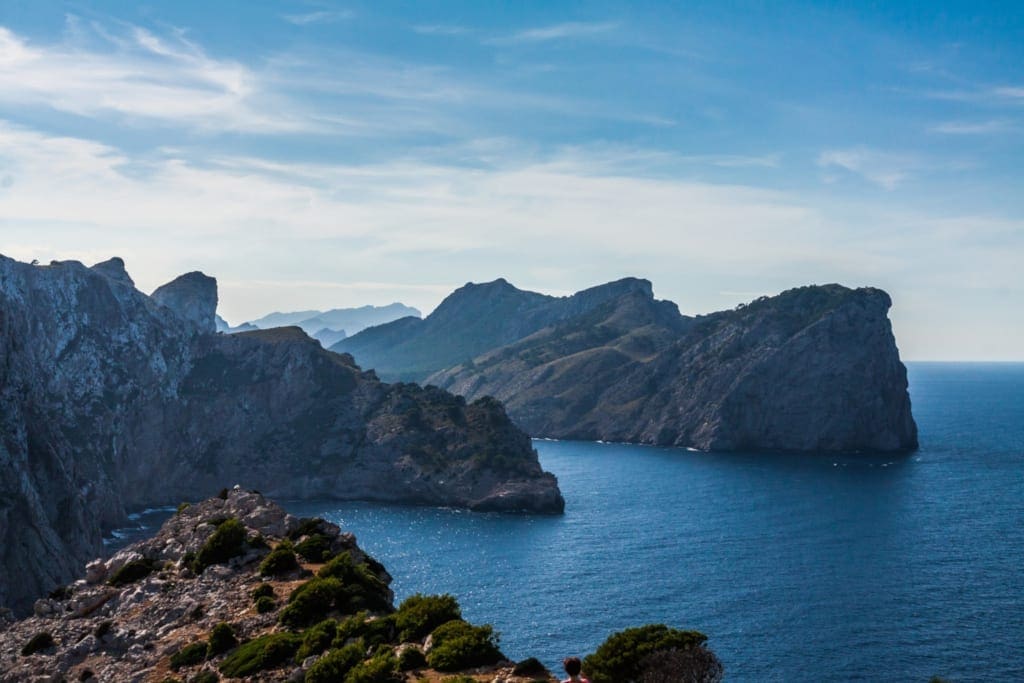
A scenic drive, razor-edged cliffs, a windswept lighthouse & Eleonora’s falcons are all features of the northern tip of the 20 km Formentor peninsula, Cap de Formentor. During their migration periods, you will also see thousands of seabirds resting on the limestone peaks that jut far out to sea. This picture-postcard landscape is dotted with cliffs and pine groves and during the drive to the penisnsula, you will see jaw-dropping scenery with amazing opportunities to take photos along the way.
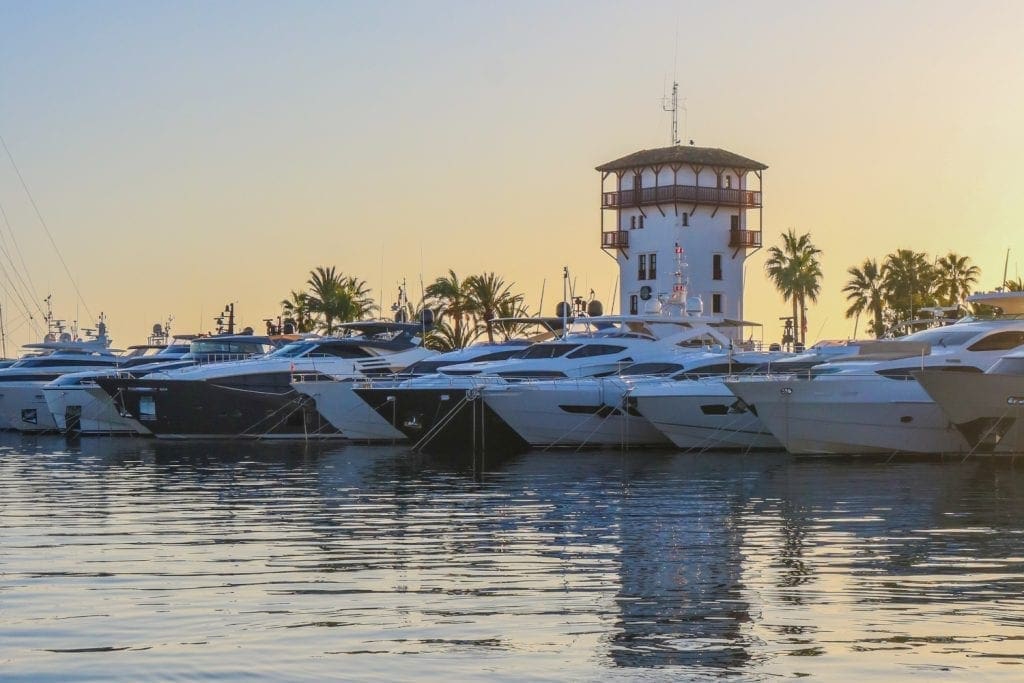
Mallorca’s answer to Puerto Banus in Marbella, Puerto Portals is easily the most glamorous marina on the island despite efforts to top it with the design and development of Port Adriano. This chic marina resort is home to A-list global celebrities and the rich and has the capacity to host more than 600 yachts up to 50m in length. Despite the number of moorings, space needs to be reserved during the summer months as demand for mooring here is very high.
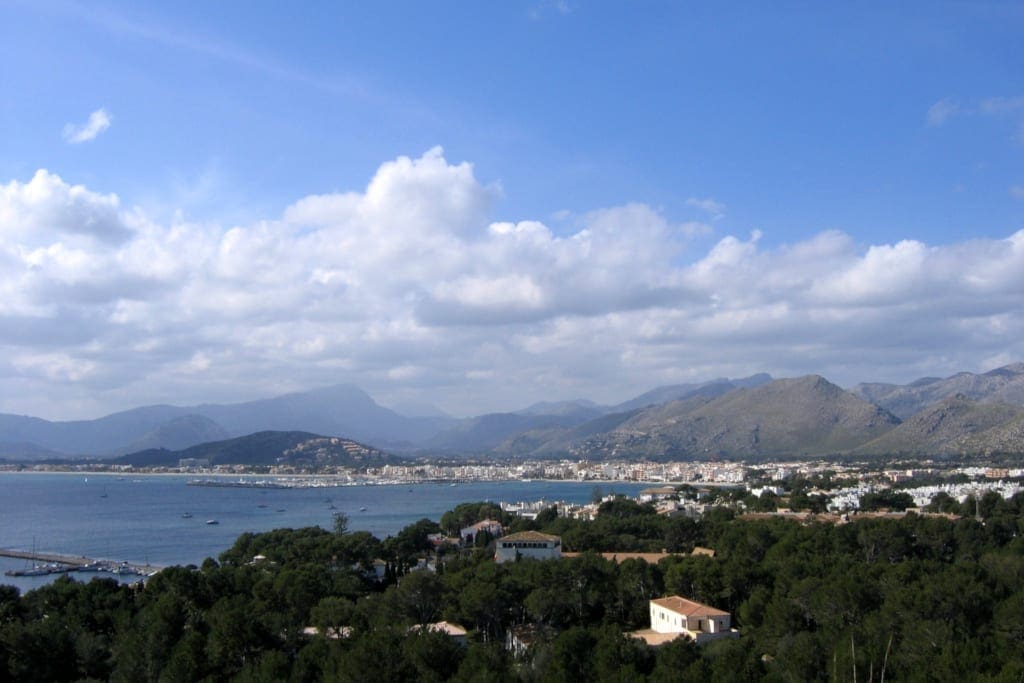
Located within a horseshoe shaped bay with great sea views and a mountain backdrop, this family-friendly tourist resort of Port de Pollensa was once a fishing village & still features a large marina. Entrancing views over to the jagged formations of the Formentor peninsula, the display of traditional llaüts (Mallorcan fishing boats), prohibitive building regulations and long swathes of sandy beach make the port very attractive and faithful visitors return to the resort time and time again.
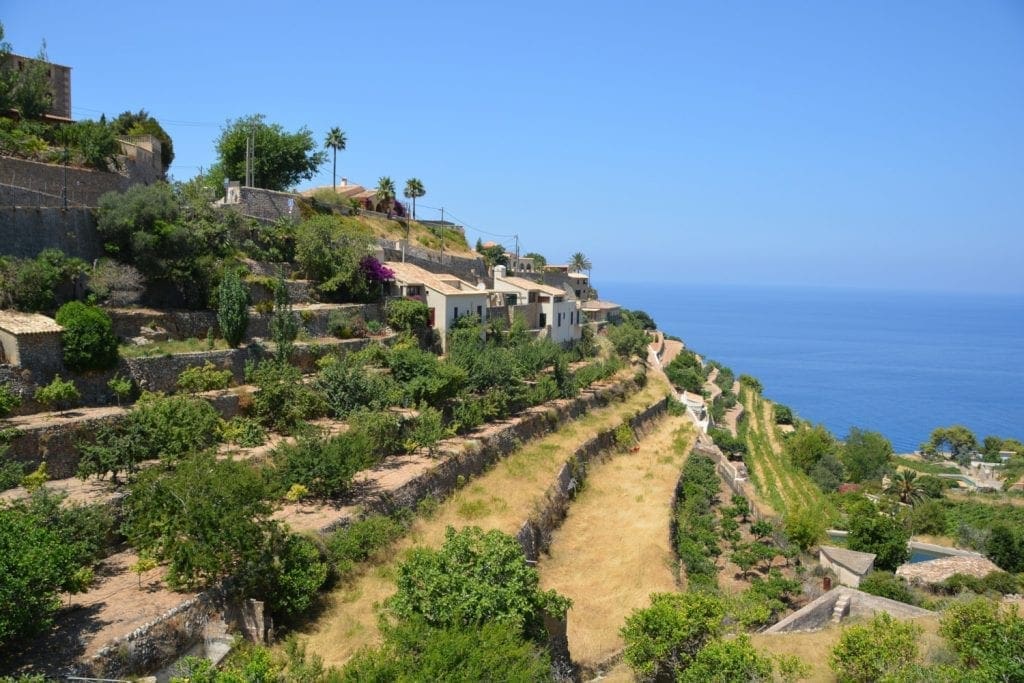
A small picturesque and authentic coastal hillside town located in a cleft in the Serra de Tramuntana’s seaward wall and steeped in history and authentic Mallorcan culture. The town was founded by the Arabs in the 10th century and the name Banyalbufar means ‘built next to the sea’ in Arabic. The majority of visitors come to Banyalbufar to see the ancient terraced hillsides descending down to the sea known as ses marjades. This quaint, rabbit warren of a town is surrounded by the Tramuntana mountain range and boasts many visitors…
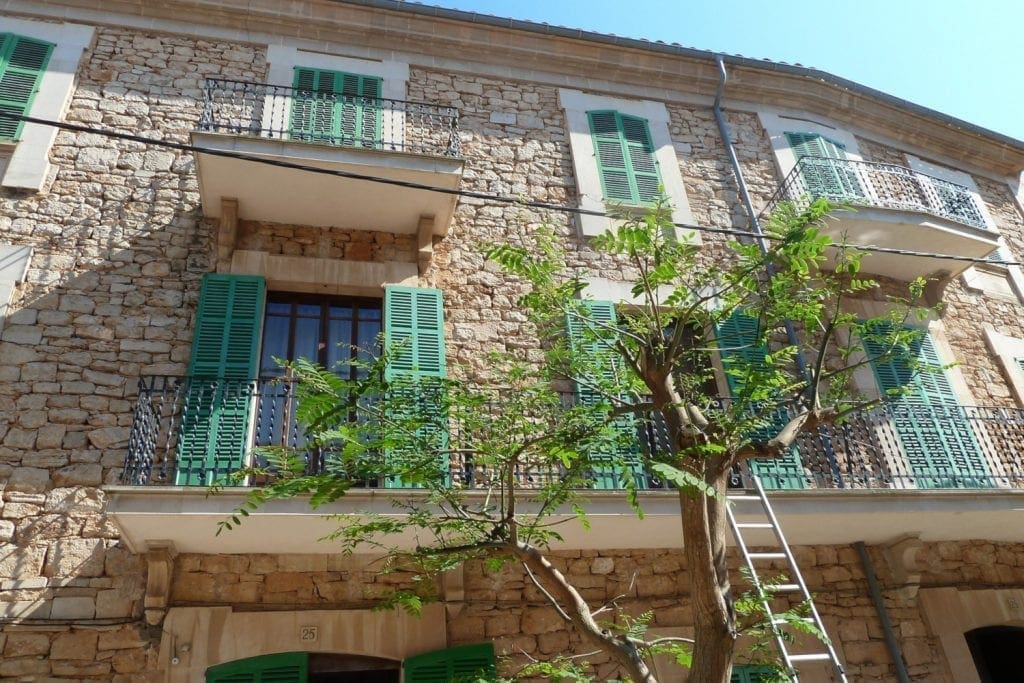
Santyani is a handsome inland town in south east Mallorca. Both serene and historic, it is located between Parc Natural de Mondragó and Ses Salines and the honey-coloured architecture, fine choice of bars, boutique shops, art galleries & restaurants are a massive draw to tourists. Particularly favoured by German tourists, this pretty, rural, authentically Mallorcan town is blessed with beautiful natural surroundings. With a slow pace of life, quaint cobbled streets and majestic church, Santyani has a special quality.
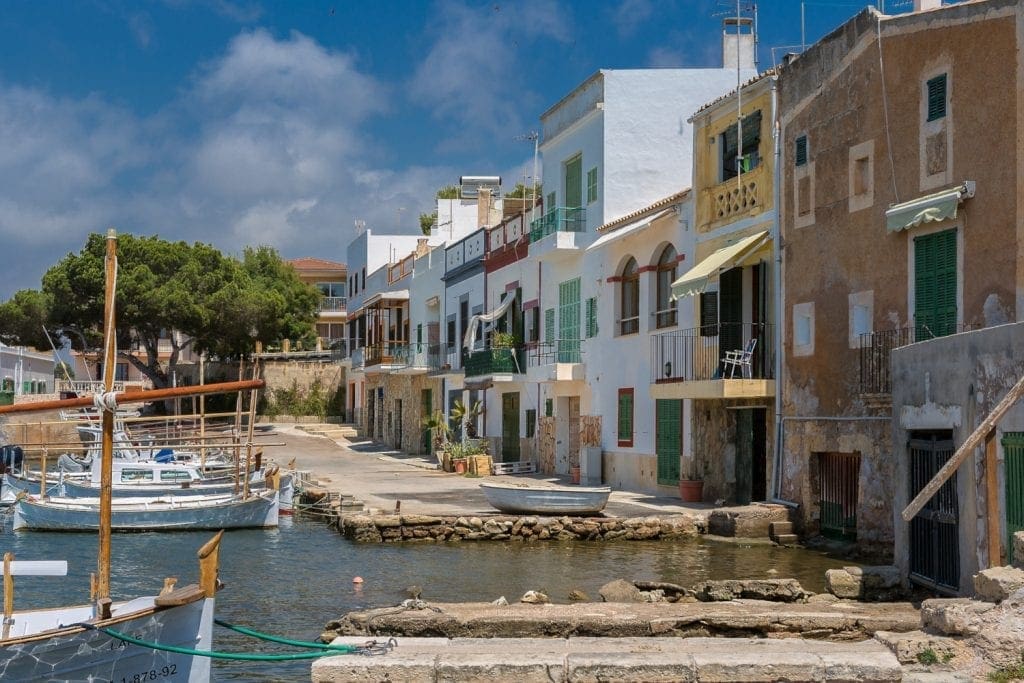
Portocolom is a sleepy, attractive traditional fishing village located on the east coast and is claimed rather dubiously as the birthplace of Christopher Columbus, although there is little evidence to support this. Resisting the usual tourist onslaught associated with picturesque coastal villages, Portocolom is a maritime town located on a beautiful deep natural harbour in a large horseshoe-shaped bay.
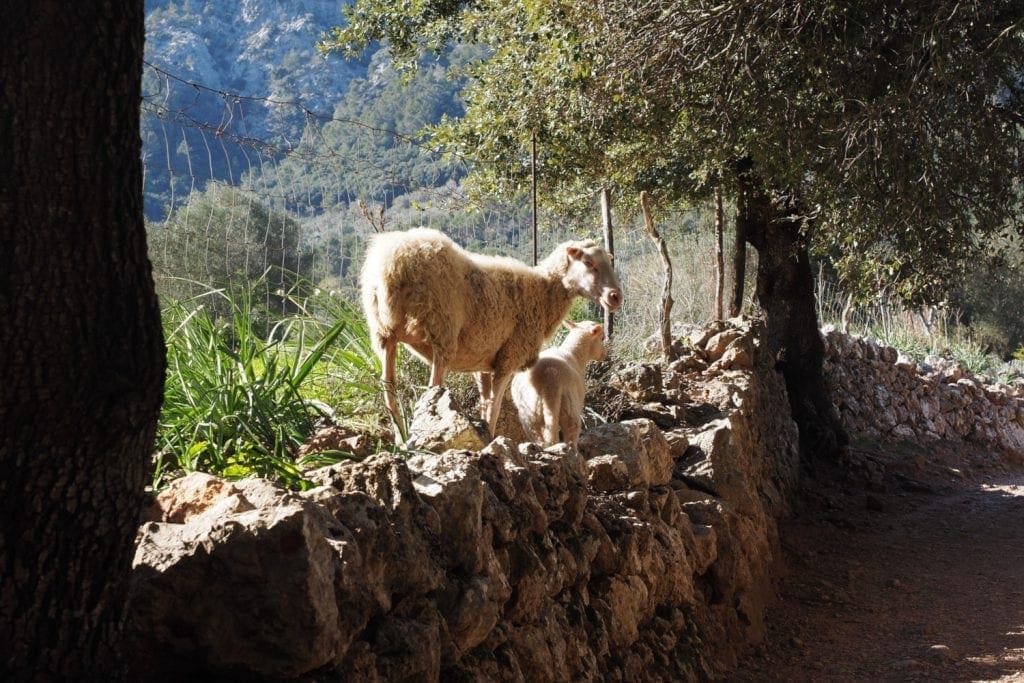
Accessible only by a winding road which connects Bunyola and Alaró, Orient is one of the most remote and loveliest villages in Mallorca and is set in the heart of the Tramuntana mountains. This idyllic, secluded village has a huddle of houses clustered on a slight rise with some on the north side looking like they may slide off soon. This small, rustic village with a population of less than 30 inhabitants…

Fornalutx is one of Mallorca’s most adorable stone-built villages, a postcard pretty authentic mountain village located in the Sóller Valley. This charming hillside village is situated high up the Tramuntana mountain range overlooking Sóller and is often referred to as the ‘Prettiest village in Spain’. There’s a few different ways to get there, whichever one you choose, you will not be disappointed…

Sant Elm (also known as San Telmo in Spanish) is a laid back fishing port on the south western edge of the island that has managed to keep mass tourism away due to its relative remoteness. This tiny charming village is situated in a magical location with the foothills of the Serra de Tramuntana mountains to the rear and the uninhabited island of Sa Dragonera to the front and is a favourite place for locals to watch and admire the glorious sunset.
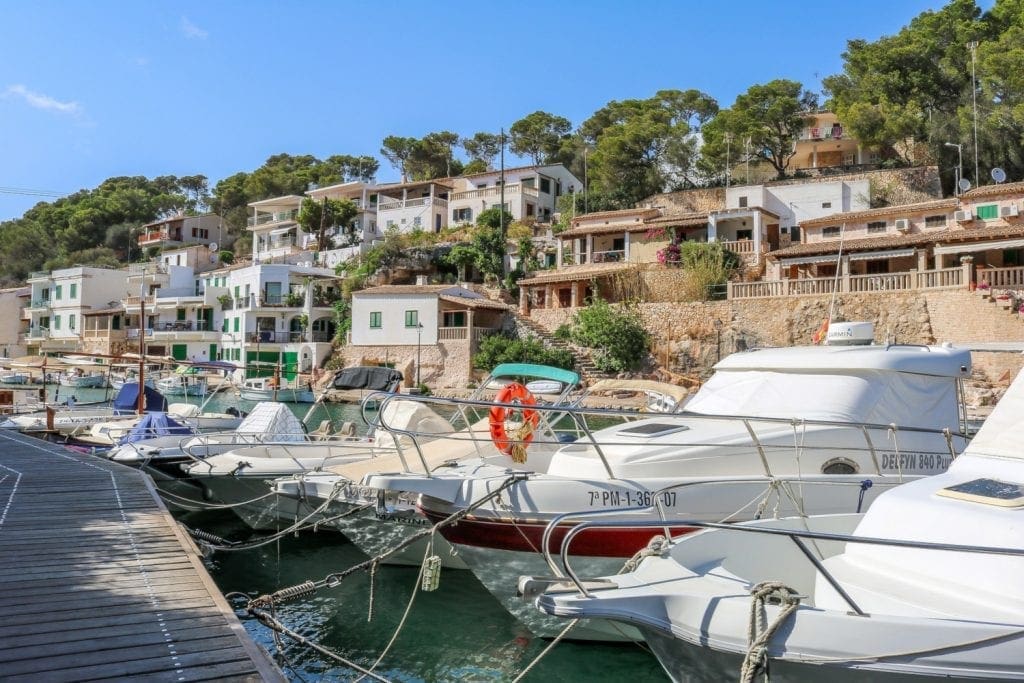
A picturesque, harbour town in the south east of the island, Cala Figuera has remained a working fishing port. Beautiful painted houses with slipways reaching down to the water’s edge, steep scrubby escarpments, fig trees and crystal waters all help to make the town impossibly pretty. Despite being located to some of Mallorca’s busiest resorts, Cala Figuera does not have a touristy feel to it…
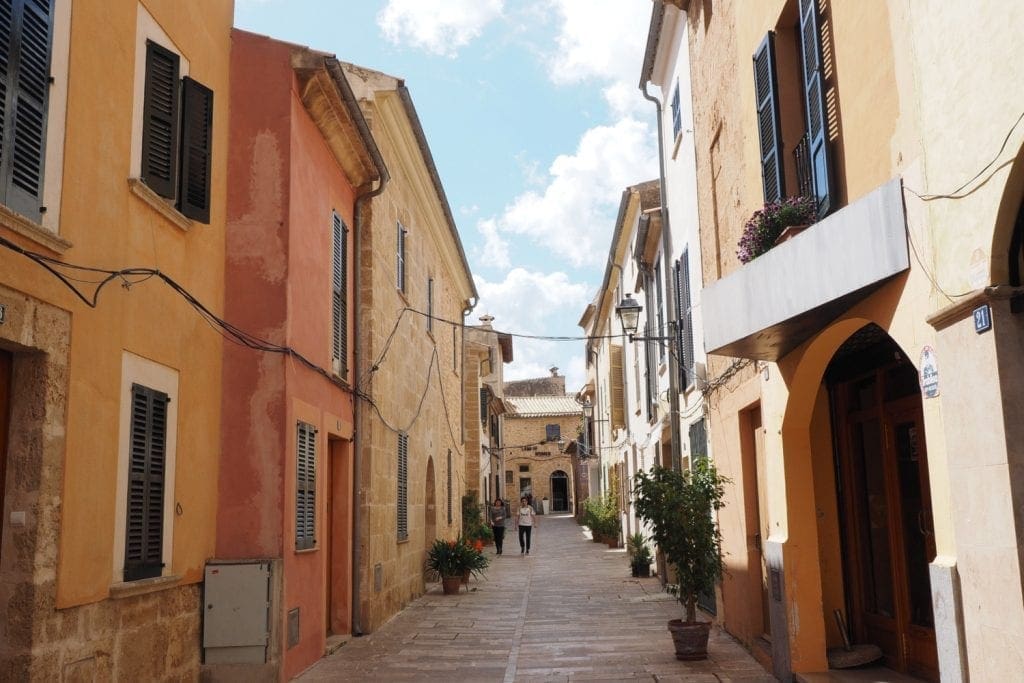
Alcúdia is a beautiful medieval walled town of quiet charm and character in the north-east of Mallorca just a few kilometres inland from the coast. Surrounded by mighty walls that contain historic mansions, scenic plazas, cafés with beautiful terraces & warm-stone houses, this vibrant town is a year-round destination, providing a rich taste of history and culture. The town is Mallorca’s largest tourist hub in the north of the island…
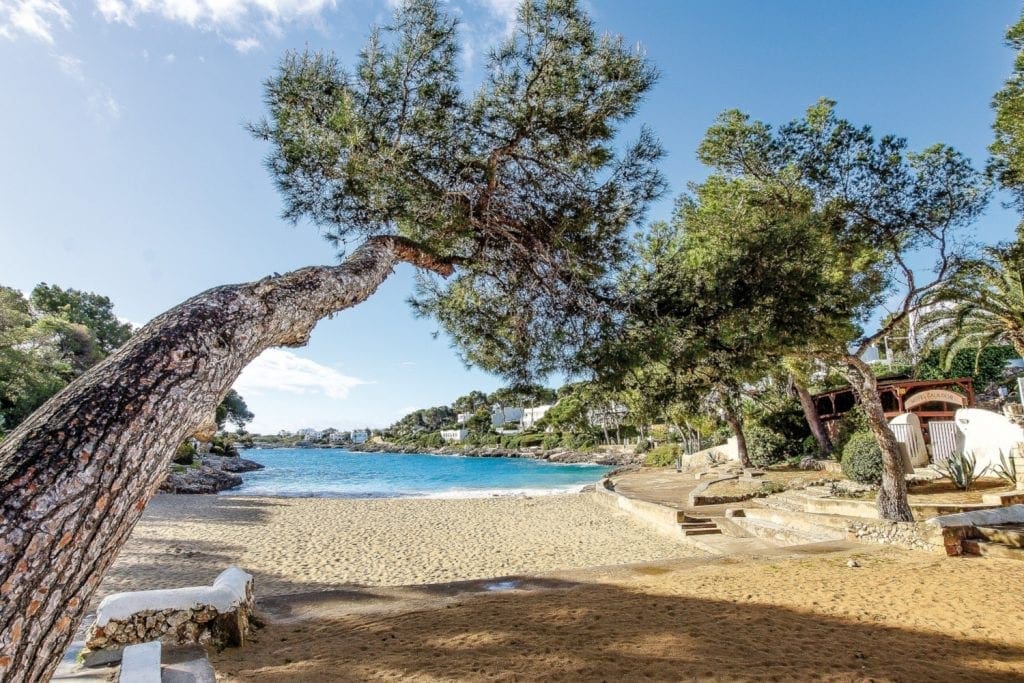
Cala d’Or, often referred to as the ‘Golden Bay’ is a very popular holiday resort located in the southeast of the island. It is particularly suited to families. The name ‘Golden Bay’ derives from the fact that it is located furthest away from the Serra de Tramuntana mountains; which have a disruptive affect on weather patterns and therefore it benefits from increased sunshine hours. It also happens to be close to some of the best beaches in Mallorca.
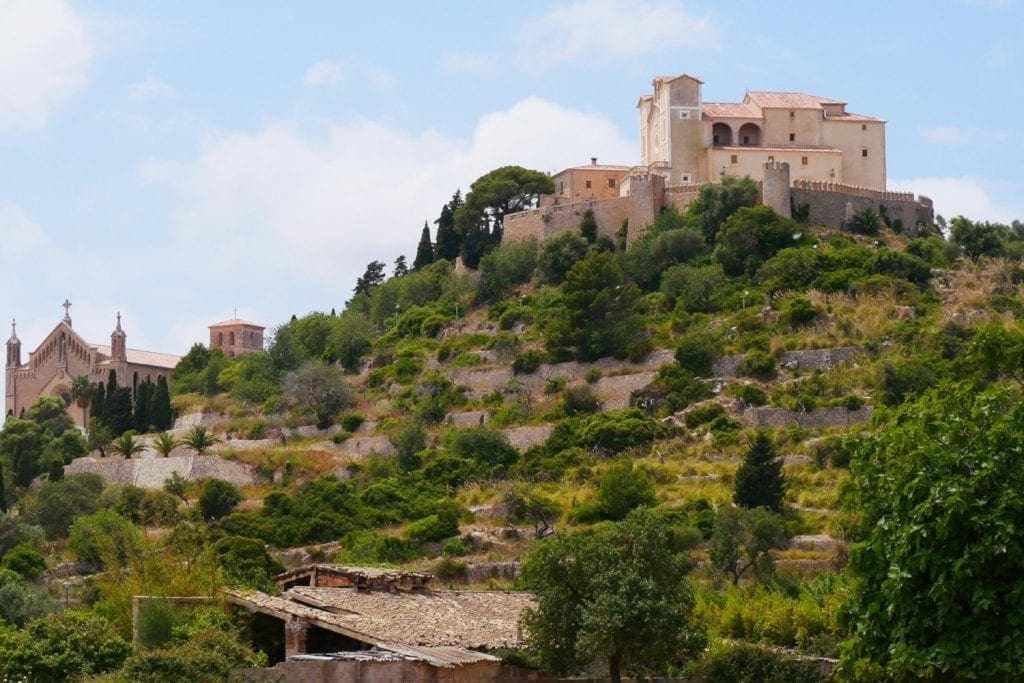
Artà is a quiet, attractive rural town with a maze of narrow streets, medieval buildings and pretty cafes with an impressive hilltop fortress built in the 14th century. Tucked away in a picturesque valley and 10 km inland from the northeast coast of the island, it is framed by mountains and beautiful rugged hills courtesy of the Llevant Natural Park. The town has stayed relatively untouched by tourism, the main visitors being German resulting in the German language becoming Arta’s unofficial third language.

Petra is a traditional rural town in the middle of the island with two impressive 16th and 17th century churches, an in-town winery, long streets of sand coloured houses, a museum, a couple of good restaurants & a bucket full of charm. Relatively untouched by tourism, mainly due to its inland location, the town is home to less than 3,000 residents, almost all of them being locals. It is the perfect destination for travellers who wish to escape the touristy parts of the island and get off the beaten track.
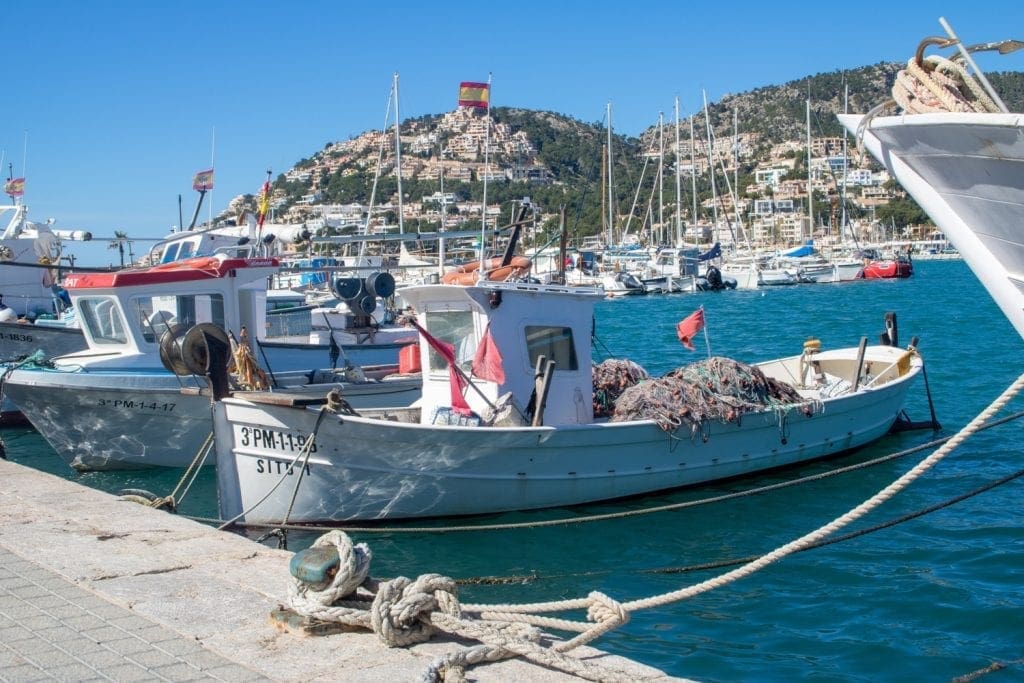
Port d’Andratx is a charming, picturesque port in the southwest of the island with a stylish, affluent and International atmosphere built from the mid-20th century around the existing fishing port and separate from the much older Andratx town. Considered by many to be the loveliest harbour in Spain, the port with its long natural bay attracts the yachting fraternity from far afield and the rich and famous own villas that you can see taking up prominent positions on the hillsides.
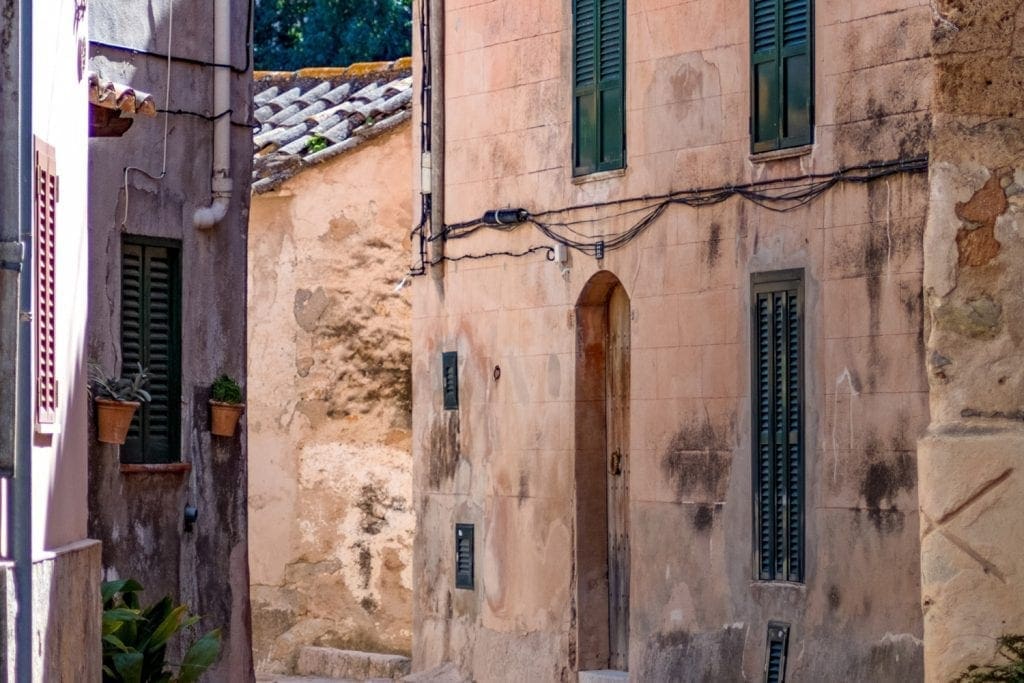
Estellencs is a very pretty and rustic mountain village located on the slopes of mount Puig de Galatzó on the rocky coastline of the Tramuntana mountains with the lowest population on the island with just over 300 residents. The first thing you will want to do when you come to Estellencs is reach for your camera, the narrow timeworn streets with their flower adorned stone buildings framed by the mountains is picture postcard perfect, no wonder that this beautiful village is a magnet for hikers and cyclists.
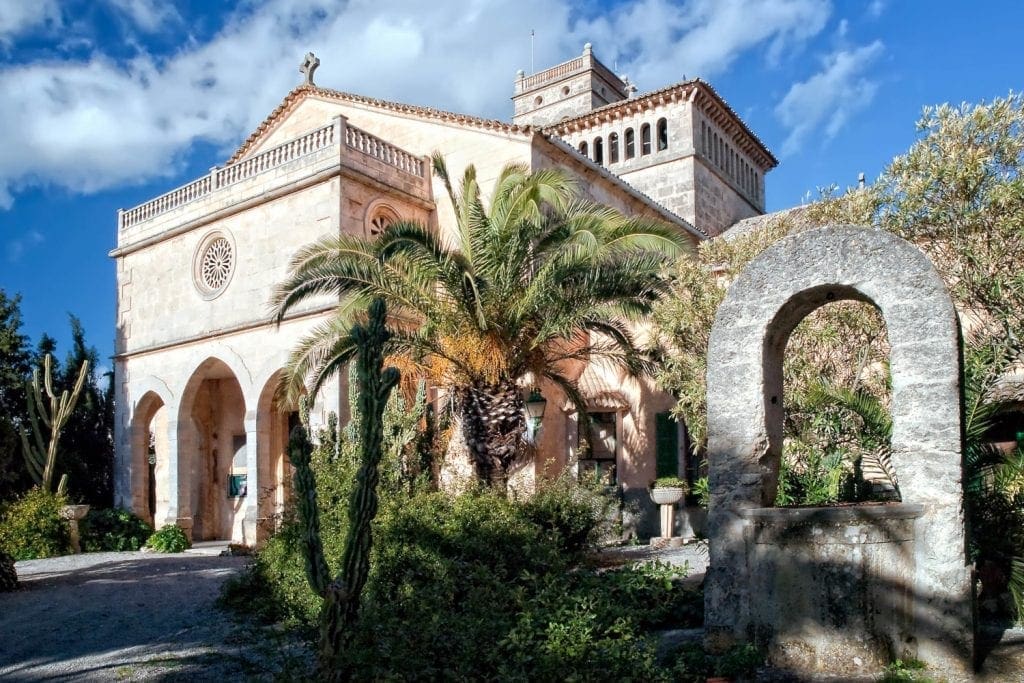
Ariany is a small inland rural town with around 800 residents located in the es Pla region of the island. Definitely a hidden gem and off the beaten track, the town boasts seven windmills and a beautiful parish church which has been remodelled many times since 1570. The church named ‘Església de Nostra Senyora de Atotxa’ is architecturally interesting and playful in style with a beautiful façade, three pointed arches and an impressive balcony with balusters.
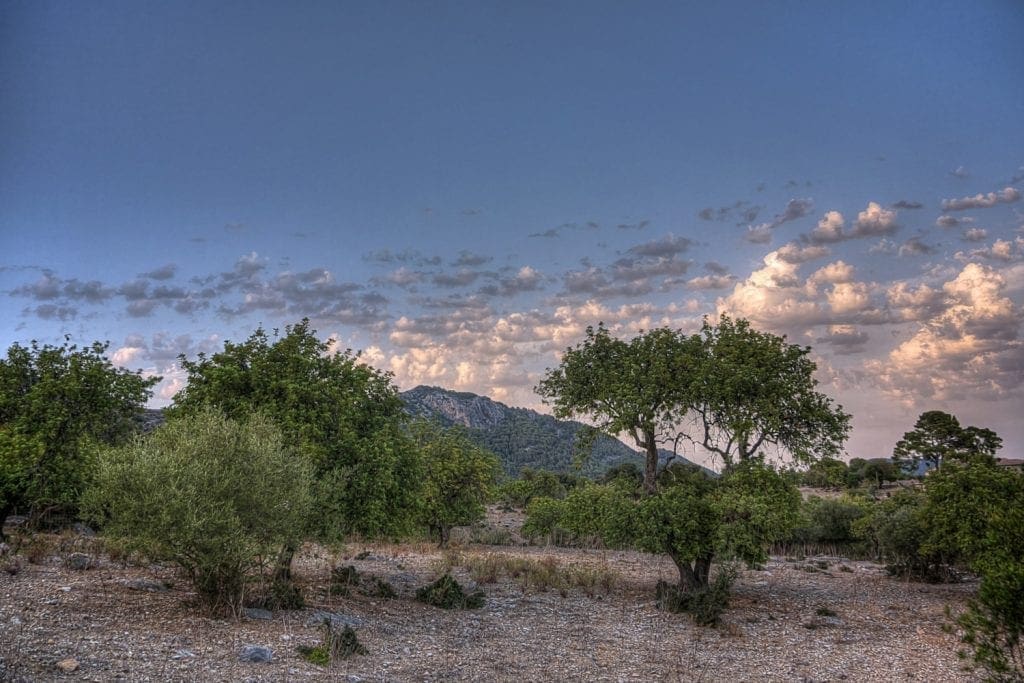
Caimari is one of Mallorca’s prettiest country villages. Tranquil, laid-back with winding narrow streets and a typically Mallorcan village square, this is a place to relax and enjoy the great views and friendly atmosphere. Located inland at the edge of the Tramuntana mountains, Caimari provides an authentic taste of rural Mallorca with history and cultural interest in abundance. Well-known for the olive oil it produces, the village is picturesque with a slow pace and is very popular with hikers and cyclists.
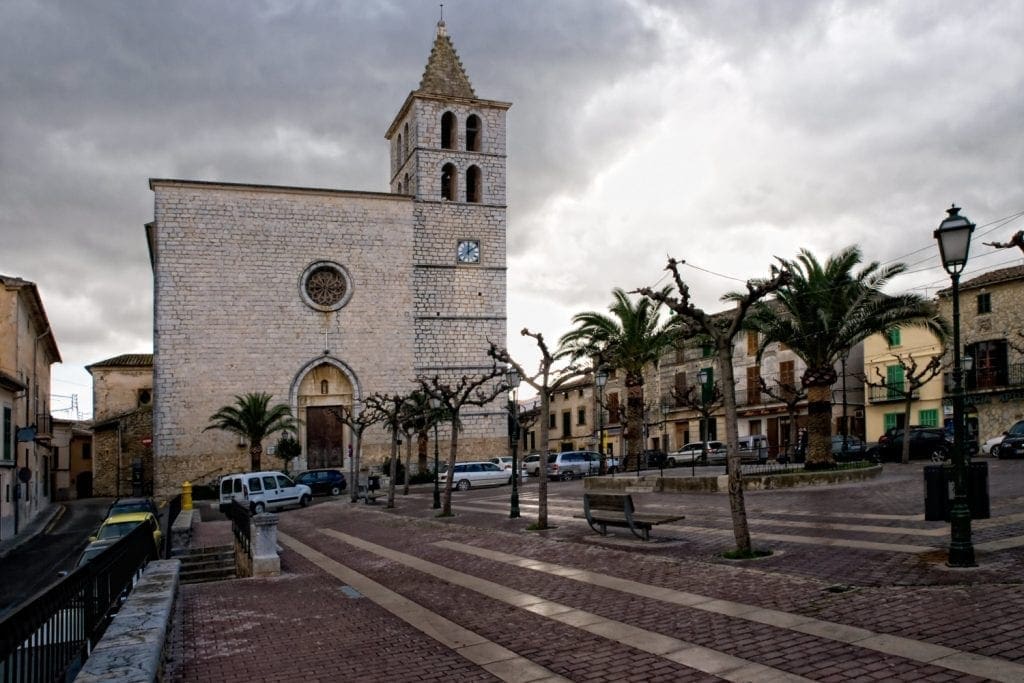
If you are interested in experiencing a little authentic Mallorcan life and want a break from the busy tourist areas, Campanet is definitely worth a brief detour. Quilted with luscious sheep-grazed meadows and surrounded by stunning landscapes, this small town of around 2600 inhabitants is an appealing village with a central square dominated by a 18th century looming Gothic church. Located above picturesque and little-visited countryside, the town of Campanet is not on the radar of most tourists >
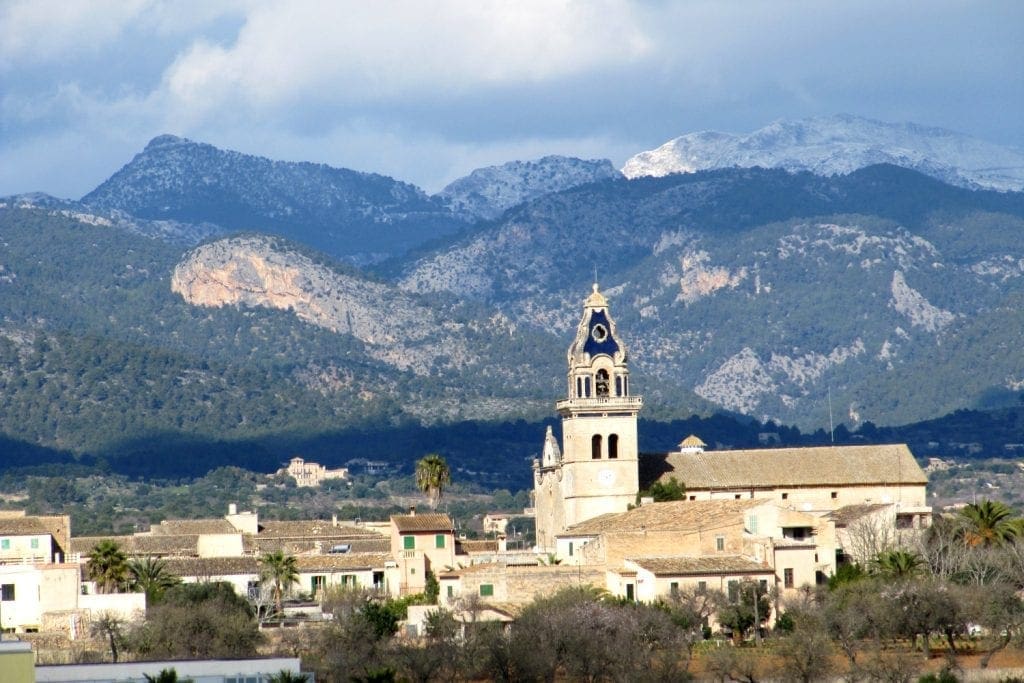
Known by the locals as just Santa Maria, this rural market town is located within the heart of the wine district in central Mallorca and is home to one of the biggest names in wine on the island, Bodegas Macià Batle. Santa Maria is well-known in Mallorca for its Sunday market and is very well-visited due to the excellent transport links to the town from the rest of the island. The town transforms from sleepy to vibrant as people gather in the marketplace to purchase fresh fruit and vegetables and locally made crafts.

Squeeze the most out of your family holiday in Majorca! From the buzzing capital of Palma to mystical caves, thrilling water parks and more – it’s impossible to choose from. The TUI Majorca Family Pass gives you easy access to some of the best attractions across the island, at a heavily discounted price!
